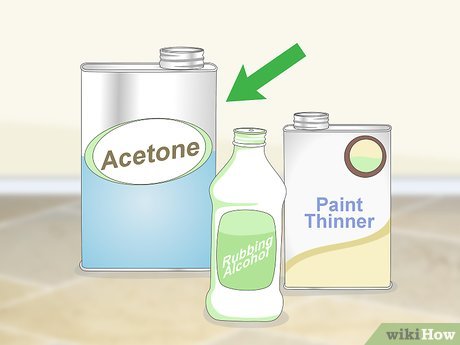How to Remove Paint from Plastic: A Comprehensive Guide
Removing paint from plastic surfaces can be a challenging task, especially if the paint has dried or if the plastic is delicate. Understanding the right techniques and tools to use can make this process much easier. This article will provide a detailed overview of how to effectively remove paint from plastic, including various methods, tools, and safety precautions. We will also discuss the types of paint that may be present on plastic surfaces and the best practices for ensuring that the plastic remains undamaged.
Understanding the Challenge of Removing Paint from Plastic
Plastic is a non-porous material, which means that paint can adhere strongly to its surface. This can make it difficult to remove without damaging the plastic itself. Additionally, different types of plastic may react differently to various solvents and cleaning agents, making it essential to choose the right method for the specific type of plastic you are dealing with.
Types of Paint Commonly Found on Plastic
- Water-Based Paints: These include latex and acrylic paints, which are generally easier to remove from plastic surfaces.
- Oil-Based Paints: These paints can be more challenging to remove and often require stronger solvents.
- Spray Paint: Frequently used for quick applications, spray paint can create a fine mist that easily settles on plastic surfaces.
- Enamel Paints: These paints are durable and can be difficult to remove, especially once cured.
Safety Considerations
Before you begin the process of removing paint from plastic, it’s important to consider safety:
- Ventilation: Ensure that you are working in a well-ventilated area, especially if you are using chemical solvents.
- Protective Gear: Wear gloves and safety goggles to protect your skin and eyes from chemicals and paint particles.
- Test First: Always test any solvent or cleaning method on a small, inconspicuous area of the plastic to ensure it does not cause damage.
Methods for Removing Paint from Plastic
There are several effective methods for removing paint from plastic surfaces. The best approach may vary depending on the type of paint and the condition of the plastic. Below are some common techniques:
1. Washing with Soap and Water
Best For: Fresh paint spills or drips.Materials Needed:
- Warm water
- Dish soap
- Sponge or cloth
Steps:
- Mix warm water with a few drops of dish soap.
- Soak a sponge or cloth in the soapy water and gently scrub the painted area.
- Rinse with clean water and dry with a towel.
2. Using Vegetable Oil
Best For: Dried latex or acrylic paint.Materials Needed:
- Vegetable oil
- Clean cloth or paper towels
Steps:
- Apply a small amount of vegetable oil to the painted area.
- Let it sit for a few minutes to soften the paint.
- Use a clean cloth to rub the area gently, applying more oil if necessary.
- Wipe away any remaining oil and paint with a clean cloth.
3. Rubbing Alcohol
Best For: Water-based paints and some oil-based paints.Materials Needed:
- Isopropyl alcohol (rubbing alcohol)
- Cotton balls or clean cloth
Steps:
- Soak a cotton ball or cloth with rubbing alcohol.
- Gently rub the painted area until the paint begins to lift.
- Wipe the area with a clean cloth to remove any residue.
4. Acetone or Nail Polish Remover
Best For: Stubborn oil-based paints.Materials Needed:
- Acetone or nail polish remover
- Cotton balls or clean cloth
- Gloves (to protect your skin)
Steps:
- Apply a small amount of acetone to a cotton ball or cloth.
- Test on a small area first to ensure it does not damage the plastic.
- Gently rub the painted area until the paint starts to dissolve.
- Wipe away any excess with a clean cloth.
5. Paint Strippers
Best For: Heavy-duty paint removal.Materials Needed:
- Commercial paint stripper (make sure it is safe for plastic)
- Paint scraper
- Gloves and goggles
Steps:
- Apply the paint stripper according to the manufacturer’s instructions.
- Allow it to sit for the recommended time.
- Use a paint scraper to gently lift the softened paint from the plastic surface.
- Wipe the area clean with a damp cloth.
6. Heat Gun
Best For: Thick layers of paint.Materials Needed:
- Heat gun
- Paint scraper
- Gloves
Steps:
- Set the heat gun to a low setting.
- Hold it a few inches away from the painted area and move it back and forth.
- Once the paint begins to bubble, use a paint scraper to gently lift it off.
- Be cautious not to overheat the plastic, as this can cause warping.
7. Baking Soda and Water Paste
Best For: Mild paint removal.Materials Needed:
- Baking soda
- Water
- Bowl
- Cloth or sponge
Steps:
- Mix baking soda and water to form a paste.
- Apply the paste to the painted area and let it sit for a few minutes.
- Use a cloth or sponge to scrub the area gently.
- Rinse with clean water and dry.
Table: Summary of Paint Removal Methods
| Method | Best For | Materials Needed |
|---|---|---|
| Washing with Soap | Fresh paint spills | Warm water, dish soap, sponge |
| Vegetable Oil | Dried latex or acrylic paint | Vegetable oil, clean cloth |
| Rubbing Alcohol | Water-based and some oil-based | Isopropyl alcohol, cotton balls |
| Acetone | Stubborn oil-based paints | Acetone, cotton balls, gloves |
| Paint Strippers | Heavy-duty paint removal | Commercial paint stripper, scraper |
| Heat Gun | Thick layers of paint | Heat gun, paint scraper, gloves |
| Baking Soda Paste | Mild paint removal | Baking soda, water, cloth |
Tips for Successful Paint Removal
- Always Test First: Before applying any solvent or cleaner, test it on a small, inconspicuous area to ensure it won’t damage the plastic.
- Work in a Ventilated Area: If using strong solvents, ensure you are in a well-ventilated space to avoid inhaling fumes.
- Use Gentle Pressure: When scraping or rubbing, use gentle pressure to avoid scratching or damaging the plastic surface.
- Be Patient: Some paint may take time to dissolve, especially if it has been on the plastic for a long time.
- Clean Up Thoroughly: After removing the paint, clean the area with soap and water to remove any residue from the solvents.
Environmental Considerations
When removing paint from plastic, it’s essential to consider the environmental impact of the materials you use:
- Dispose of Chemicals Properly: Many solvents and paint strippers can be hazardous. Follow local regulations for disposing of these materials.
- Use Eco-Friendly Alternatives: Whenever possible, opt for eco-friendly paint removers or natural methods to minimize environmental harm.
- Protect Surrounding Areas: Cover nearby surfaces to protect them from paint splatters and chemical spills during the removal process.
Conclusion
Removing paint from plastic surfaces can be a straightforward task if you use the right techniques and materials. By understanding the various methods available and following the safety tips outlined in this guide, you can effectively restore your plastic items to their original condition. Whether you’re dealing with a small paint spill or a larger project, the right approach will help you achieve the desired results without damaging the plastic.
FAQ Section
- What types of paint can be removed from plastic?
Most types of paint, including water-based, oil-based, and spray paint, can be removed from plastic using the appropriate methods. - Can I use acetone on all types of plastic?
No, acetone can damage certain plastics. Always test on a small area first. - How do I know if a solvent is safe for my plastic?
Check the manufacturer’s guidelines or do a small patch test to see if the solvent affects the plastic. - What should I do if the paint won’t come off?
Try using a stronger solvent or paint stripper, and ensure you are using the correct method for your type of plastic. - Is it safe to use a heat gun on plastic?
Yes, but be cautious. Use it on low settings and keep it moving to avoid melting the plastic. - How long should I let solvents sit on the paint?
Follow the manufacturer’s instructions, but typically, letting it sit for 5-10 minutes is effective. - Can I use a pressure washer to remove paint from plastic?
Pressure washers can be too harsh and may damage the plastic. It’s better to use gentler methods. - What if I accidentally damage the plastic while removing paint?
If the plastic is scratched or damaged, consider using a plastic polish or filler to repair it. - How can I prevent paint from getting on plastic in the future?
Use painter’s tape to cover plastic surfaces and be cautious when painting nearby. - Where can I find more information on paint removal and safety?
For more information, you can visit the following link:



